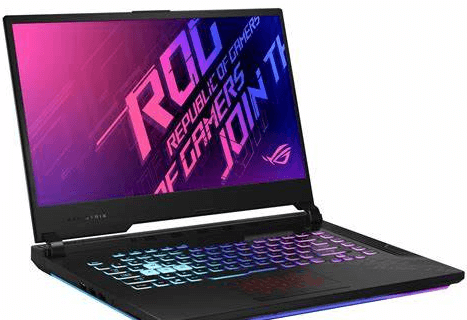
Learn All About 144hz Laptop
you’re in luck! In this article, we’ll explore the features and benefits of a 144hz Laptop. From what it is and how it works to why you should get one—we have all the info you need to know. Whether you are an avid gamer or just someone who wants smoother visuals and better speed, a laptop might be exactly what you’re looking for. Keep reading to learn all about them!
What is 144hz Laptop?
In order to understand what 144hz Laptop, it is important to know what “hz” stands for. Hz is the unit of measurement used to describe how often a screen can refresh itself in a second. So, when we say that a laptop has a higher refresh rate than a 60hz laptop, what we mean is that the laptop can refresh its screen up to 144 times in one second whereas the 60hz laptop can only refresh its screen up to 60 times in one second.
The main advantage of having a higher refresh rate is that it can help reduce screen tearing. Screen tearing is a phenomenon that occurs when your graphics card is outputting frames at a rate that is faster than your monitor’s refresh rate. When this happens, you will see horizontal lines appearing on your screen as the different frames try to occupy the same space on your monitor. This can be quite distracting and annoying, especially if you are trying to enjoy a fast-paced game or movie. By increasing the refresh rate of your monitor, you are essentially giving your graphics card more “room” to work with and this can help reduce or eliminate screen tearing.
Another advantage of having a higher refresh rate is that it can help improve your gaming experience. A lot of fast-paced games require quick reflexes and any lag or delay in your input can result in you losing the game. By having a higher refresh rate, you are essentially reducing the amount
What is the difference between 144hz and 60hz?
The main difference between 144hz and 60hz is the refresh rate. A higher refresh rate means that the image on your screen will be refreshed more often, resulting in a smoother image. 144hz also results in a lower input lag, which is the time it takes for your computer to process an input from your mouse or keyboard. This can be important for gamers who need to react quickly to what’s happening on screen.
How does 144hz affect gaming?
For starters, let’s dispel the myth that more Hz means better gaming performance. Sure, a higher refresh rate monitor will produce less screen tearing than a lower refresh rate one. But unless you have an extremely powerful graphics card that can consistently deliver high frame rates (we’re talking 150+ fps), you won’t see any real benefit from a 144Hz monitor over a 60Hz one. In fact, most people won’t even be able to tell the difference.
However, there are some gamers who swear by 144Hz gaming monitors. If you fall into this category, then you know that every little bit counts when it comes to gaining those all-important milliseconds of reaction time. If you’re willing to spend the extra cash on a 144Hz monitor, then go for it – just don’t expect miracles.
What are the benefits of 144hz?
If you’re a PC gamer, then you know that one of the most important specs on your monitor is the refresh rate. A high refresh rate means that your screen can refresh more times per second, which results in a smooth image. Most monitors have a 60hz refresh rate, but some gaming monitors go all the way up to 144hz. So, what are the benefits of a 144hz monitor?
First of all, 144hz monitors are great for fast-paced games. If you play a lot of first-person shooters or racing games, then you’ll definitely benefit from the extra frames per second that a 144hz monitor provides. The extra frames make it easier to track moving targets and also make the game look much smoother overall.
Another benefit of 144hz monitors is that they can help reduce screen tearing. Screen tearing occurs when your GPU is outputting more frames than your monitor can handle, and it results in horizontal lines appearing on your screen. This can be extremely distracting and ruin your gaming experience. A 144hz monitor eliminates screen tearing by syncing with your GPU so that you always get a smooth image.
Finally, 144hz monitors also have lower input lag than 60hz monitors. Input lag is the amount of time it takes for your mouse or keyboard input to be displayed on screen. This can be frustrating if you’re trying to perform quick actions in games, but it’s not an issue with144hz monitors
Are there any drawbacks to 144hz?
Are there any drawbacks to 144hz? The most noticeable drawback to having a 144hz monitor is the price. They can be twice as expensive as a standard 60hz monitor. Another potential issue is that your computer may not be powerful enough to take advantage of the high refresh rate. If you’re not getting at least a few hundred frames per second from your graphics card, then you’re not really benefiting from having a 144hz monitor.
Conclusion
In conclusion, the 144hz laptop is an amazing technology for gaming and multimedia use. It provides a better response time than other laptops with lesser refresh rates, allowing you to get more out of your gaming experience or video editing/streaming session. With its fast response times and improved motion resolution, the 144hz laptop will give you a superior viewing experience compared to similar models available on the market today. If you are in the market for a reliable and high-performance laptop, then it would be wise to consider investing in one with this impressive technology.




